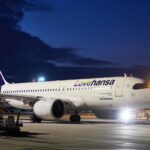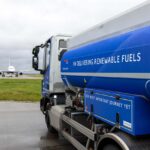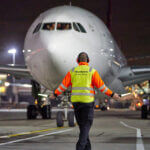Hong Kong’s Cathay Pacific Airways will acquire 38 million US gallons of blended sustainable aviation fuel (SAF) at San Francisco International Airport from California-based producer Aemetis over a seven-year period commencing in 2025. The deal is part of a 350-million-gallon commitment by the oneworld airline alliance, of which Cathay is a founding member. The product will be a blend of 60% Jet A1 fuel and 40% SAF, to be comprised of cellulosic hydrogen produced from waste wood, then combined with other wastes, non-edible sustainable oils and zero carbon intensity hydroelectric power. It will be produced at the Aemetis Carbon Zero plant, which is being developed in Riverbank, east of San Francisco. The fuel deal coincides with Cathay’s expansion of its Fly Greener carbon offset programme to include air cargo services and follows the launch earlier this year of its Corporate SAF Programme, through which customers can help compensate for business travel and air freight emissions by contributing to the cost of the airline’s sustainable fuels.
“Cathay Pacific continues to reaffirm its commitment to addressing climate change despite these challenging times,” said the company’s CEO Augustus Tang. “In the past few years, we have announced our carbon net-zero by 2050 target and our goal of achieving 10% use of SAF by 2030. In doing this, we have built a robust SAF procurement strategy to help meet our goals.
“We are pleased that this agreement with Aemetis will contribute to that effort, and we hope it will also send the right signal to the SAF industry to encourage the much-needed investment and scaling up of its supply chain,” added Tang, reinforcing broad industry hopes of global government support and policies to help deliver net zero flight emissions by 2050.
Aemetis CEO Eric McAfee said: “The Aemetis Carbon Zero plant under development in the Central Valley of California is designed to utilise zero carbon intensity electricity, negative carbon intensity hydrogen from waste wood and renewable oils along with CO2 sequestration to produce low carbon intensity sustainable aviation fuel.”
But, he added: “While the technology exists today, sustainable aviation fuel is not yet available at scale. Offtake agreements like oneworld’s commitment, as well as targeted investments, regulations and government support mechanisms, will help enable the industry’s transition towards SAF.”
So, too, will airline customer programmes such as Cathay’s Fly Greener carbon offset initiative, which has just been extended to enable cargo clients to measure the carbon emissions of specific shipments and the costs of accredited offsets. Although customers can already estimate their potential emissions by searching for flight connections via the Cathay Cargo website, the new programme uses a sophisticated carbon emissions calculator which enables registered customers to offset their shipments by airwaybill (AWB) number, up to five of which can be simultaneously lodged.
The assessment tool, which uses the latest IATA methodology, was designed by Cathay subsidiary Global Logistic System and shows the volume of emissions and the offset charge in local currency, calculated by freight weight, aircraft type, actual route flown and journey distance. After each submission, a spreadsheet is sent to the customer detailing total freight carried and claimed, and a calculation of the carbon offset valuation. Payment generates a certificate highlighting the offset total and the sustainability project, with funds transferred to validated initiatives though carbon credits purchased by Cathay Pacific.
“We know that carbon offset calculations can be complex and need to be accurate for sustainability auditing purposes,” said Chris Bowden, Cathay’s Head of Cargo Global Partnerships. “We believe that the ease and simplicity of Fly Greener and the carbon emissions calculator makes the rigour and complexity that goes into carbon emissions calculations straightforward and user-friendly, which is something our customers have been actively seeking.”
Initially, the emissions calculator will accept retrospectively-lodged AWB numbers. But future versions of the programme will embed the carbon measurement tool into Cathay Pacific Cargo’s digital booking and confirmation system, Click & Ship, enabling freight customers to add offsets directly into their bookings.
Photo: Cathay Pacific















More News & Features
Wizz Air sets 10% by 2030 SAF target while partner Firefly unveils plans for UK sewage-to-SAF production
DG Fuels and SAFFiRE advance their US agricultural waste to SAF production projects
European airlines call on policymakers to help “supercharge” domestic SAF production
Air New Zealand seeks startup fuel innovators in quest for 20% SAF usage by 2030
British Airways in multi-million-pound energy transition to reduce Heathrow ground emissions
European aerospace supplier Aciturri takes key stake in Dovetail Electric Aviation